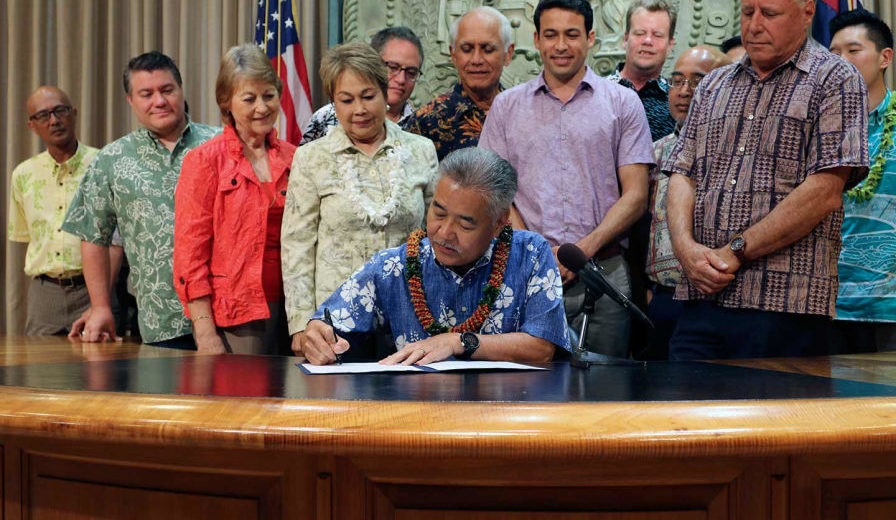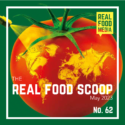by Anna Lappé, The Nation
When Scott Pruitt took over the top spot at the Environmental Protection Agency last year, one of his first formal actions was to reject the recommendation of his agency’s own scientists and refuse to ban the brain-damaging pesticide chlorpyrifos. The move came just 20 days after Pruitt had met with the CEO of Dow Chemical, the manufacturer of chlorpyrifos, and earned strong rebukes not only from environmental groups but also from the American Academy of Pediatrics. “We are deeply alarmed that the EPA’s decision to allow the continued use of chlorpyrifos contradicts the agency’s own science and puts developing fetuses, infants, children, and pregnant women at risk,” the AAP wrote to Pruitt in a joint letter with the Environmental Working Group.
Now the state of Hawaiʻi is stepping into the breach. On June 13, Hawaiʻi Governor David Ige signed legislation to phase out the use of chlorpyrifos on the islands and pass other commonsense regulations on pesticides there. The bill, SB 3095, was a long time coming.
Hawaiʻi over the past two decades has become ground zero for field trials of genetically engineered corn seeds by the world’s largest chemical companies, including DowDuPont, ChemChina-Syngenta, Pioneer, BASF, and Monsanto (recently purchased by Bayer). These trials require heavy spraying of pesticides, many of which are known to be toxic. The companies were drawn to Hawaiʻi in part because its temperate climate allows multiple growing cycles per year. What’s more, the state’s remote location and lack of strong regulatory bodies have meant that the chemical industry has been operating with little accountability since it took over the leases on thousands of acres in the late 1990s.
On more than a 13,000 of those acres in Kauaʻi, stretching across the non-touristy west side, home to much of the island’s Native Hawaiian population, these companies have established the world’s epicenter for developing new genetically engineered corn seeds paired with pesticides. Many of these pesticides are “restricted use,” an EPA designation for pesticides that have a potential to “cause unreasonable adverse effects to the environment and injury” to people and, therefore, are supposed to only be sprayed by certified pesticide applicators or those supervised by one. They include the herbicide atrazine, an endocrine disruptor, and chlorpyrifos, which has long been known to damage the brains of developing fetuses and children. Experts assert there is no safe level of exposure for children. (Indeed, these findings formed the basis of the ban the EPA instituted on chlorpyrifos for indoor use way back in 2001).
When I visited Kauaʻi earlier this year, I stood on an overlook above the town of Waimea, population 9,212, where I could see fields of genetically modified corn abutting neighborhoods, community centers, and schools. Since there have been no mandatory buffer zones, test sites like the ones I saw are planted alongside residential neighborhoods, schoolyards, streams, and, this being an island, the ocean, too.
From my perch, I could see the middle school where dozens of children and teachers fell ill in 2006, and again in 2008, with complaints of dizziness, nausea, and headaches. The community says the illnesses resulted from the pesticides sprayed on adjacent fields, although, without mandatory disclosure of what is sprayed and when, the companies can assert that there is no definitive proof. In fact, industry contended that students’ symptoms were a reaction to stinkweed growing next to the property. In a letter submitted to a Joint Fact Finding commission, however, former EPA scientist Milton Clark made clear that there is “no quantitative or qualitative evidence” to support the stinkweed theory.
Local advocates have been documenting how communities living near these agrochemical fields are suffering disproportionately higher levels of health impacts associated with pesticides. Communities have documented ill effects on workers, too, including an incident in 2015 when farmworkers on Kauaʻi were hospitalized for exposure to chlorpyrifos.
There’s also mounting concern about pesticide-associated birth defects such as gastroschisis, a condition in which the baby is born with their intestines outside the body. Because local agencies have been under resourced, formalized assessmentof the rise of these incidents has not yet happened. Yet, local doctors have expressed concerns—and you hear the stories. When I told the chatty waitress at a hipster wine bar we ate at one night why I was visiting the island, she shared that her best friend had just given birth to a son with gastroschisis.
Frustrated with this lack of accountability, community-based groups like the Hawaii Alliance for Progressive Action and Hawaii SEED partnered with national groups including the Center for Food Safety and Pesticide Action Network. (The foundation I work with has funded HAPA, Hawaii SEED, and Pesticide Action Network). Alongside advocates on Maui and the island of Hawaiʻi, where the agrochemical industry has seed operations as well, residents came together to develop ordinances for regulating the agrochemical industry.
In 2014, after years of hard work, three Hawaiian counties—Maui, Kauaʻi, and the island of Hawaiʻi—passed county-level ordinances. In Kauaʻi, voters passed Bill 2491, which would have required companies to disclose what pesticides they were spraying, give residents notification prior to such spraying, and observe buffer zones around schools and other sensitive areas. The bill also included provisions that would have required basic environmental-impact and health studies.
In the wake of the win, the chemical industry sued on the grounds that state policy preempts county ordinances. The case went all the way to the US Court of Appeals for the Ninth Circuit Court, and in 2016 the court determined that state policy preempts county decision-making. The legislation was overturned.
Community advocates regrouped to develop statewide legislation. It was an uphill battle; the industry is a major source of jobs and a powerful lobby. In 2014, for instance, it was reported that chemical companies raised nearly $8 million in the fight against Maui’s local ordinances. And from 2008 to 2016, just four companies—Monsanto, Syngenta, DuPont Pioneer, and Dow—spent nearly $300,000 in direct campaign contributions to dozens of candidates. Nonetheless, despite intense industry pushback, on May 1, the state legislature passed SB 3095, a bill that would phase out chlorpyrifos, mandate restricted use pesticide disclosure, and include provisions for modest no-spray buffer zones around schools. On June 13, the governor signed it.
The New York Times recently reported that the EPA has effectively defanged Obama-era legislation that attempted to strengthen risk assessments of the most hazardous chemicals used in agriculture and other sectors. The move is another sign that under Pruitt’s leadership the EPA is rolling back key public-health protections.
During this time, we can—and must—look to creative alternatives to EPA roadblocks. All around the country, communities are stepping in to protect our health and environment, with advocates in California, Maryland, and New Jersey all exploring state-based bans on chlorpyrifos; Minnesota lawmakers, meanwhile, introduced a resolution to ban the chemical last year.
This week, Hawaii took the lead.
Originally published in The Nation.
Photo by Audrey McAvoy/ AP Photo




